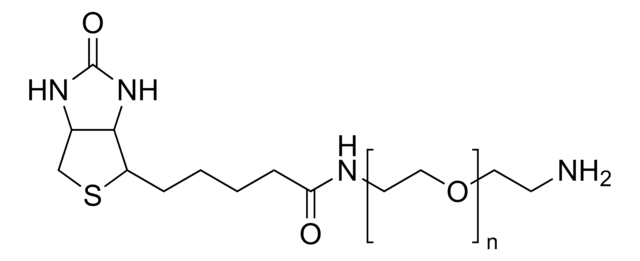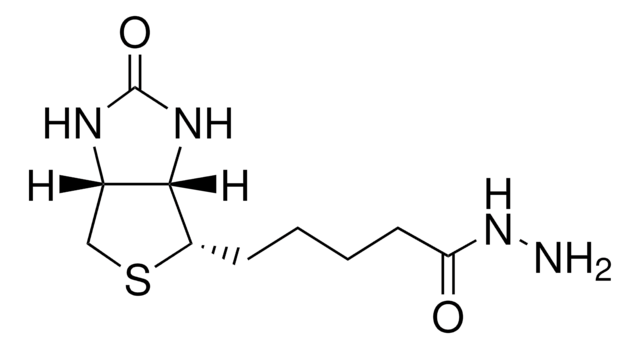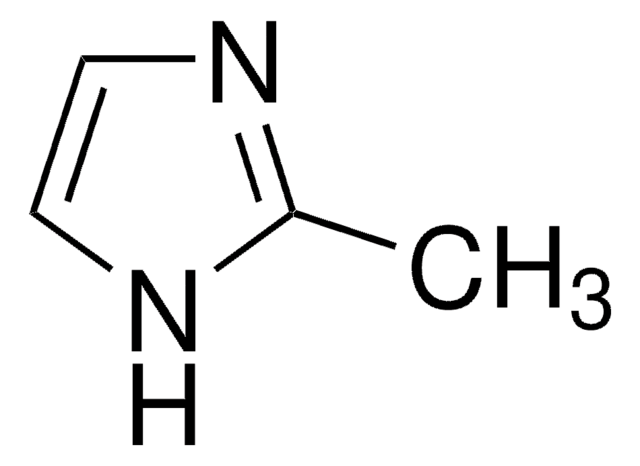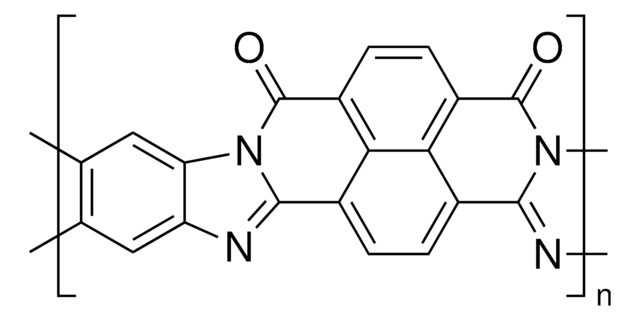689882
O-(2-Amino-ethyl)-O′-[2-(biotinyl-amino)-ethyl]-octaethylenglykol
≥95% (oligomer uniformity)
Synonym(e):
Biotin-PEG-amin (n = 8)
About This Item
Empfohlene Produkte
Assay
≥95% (oligomer uniformity)
Form
powder
Mol-Gew.
average Mn 700
Eignung der Reaktion
reagent type: cross-linking reagent
Ω-Ende
amine
α-Ende
biotin
Lagertemp.
−20°C
SMILES String
NCCOCCOCCOCCOCCOCCOCCOCCOCCOCCNC(=O)CCCC[C@@H]1SC[C@@H]2NC(=O)N[C@H]12
InChI
1S/C30H58N4O11S/c31-5-7-37-9-11-39-13-15-41-17-19-43-21-23-45-24-22-44-20-18-42-16-14-40-12-10-38-8-6-32-28(35)4-2-1-3-27-29-26(25-46-27)33-30(36)34-29/h26-27,29H,1-25,31H2,(H,32,35)(H2,33,34,36)/t26-,27-,29-/m0/s1
InChIKey
UHIKHSATVJGWOI-YCVJPRETSA-N
Verwandte Kategorien
Verpackung
Lagerklassenschlüssel
11 - Combustible Solids
WGK
WGK 3
Flammpunkt (°F)
Not applicable
Flammpunkt (°C)
Not applicable
Persönliche Schutzausrüstung
Eyeshields, Gloves, type N95 (US)
Analysenzertifikate (COA)
Suchen Sie nach Analysenzertifikate (COA), indem Sie die Lot-/Chargennummer des Produkts eingeben. Lot- und Chargennummern sind auf dem Produktetikett hinter den Wörtern ‘Lot’ oder ‘Batch’ (Lot oder Charge) zu finden.
Besitzen Sie dieses Produkt bereits?
In der Dokumentenbibliothek finden Sie die Dokumentation zu den Produkten, die Sie kürzlich erworben haben.
Artikel
Progress in biotechnology fields such as tissue engineering and drug delivery is accompanied by an increasing demand for diverse functional biomaterials. One class of biomaterials that has been the subject of intense research interest is hydrogels, because they closely mimic the natural environment of cells, both chemically and physically and therefore can be used as support to grow cells. This article specifically discusses poly(ethylene glycol) (PEG) hydrogels, which are good for biological applications because they do not generally elicit an immune response. PEGs offer a readily available, easy to modify polymer for widespread use in hydrogel fabrication, including 2D and 3D scaffold for tissue culture. The degradable linkages also enable a variety of applications for release of therapeutic agents.
Devising biomaterial scaffolds that are capable of recapitulating critical aspects of the complex extracellular nature of living tissues in a threedimensional (3D) fashion is a challenging requirement in the field of tissue engineering and regenerative medicine.
Unser Team von Wissenschaftlern verfügt über Erfahrung in allen Forschungsbereichen einschließlich Life Science, Materialwissenschaften, chemischer Synthese, Chromatographie, Analytik und vielen mehr..
Setzen Sie sich mit dem technischen Dienst in Verbindung.






